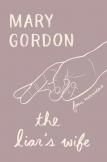A Careful Quartet
Mary Gordon is a writer we need to pay attention to. No, her prose is not stylistically exciting. She favors the mannerly sentence, the back story, characters hyperconscious of their shortcomings. Yet it is exactly these qualities that permit her to examine with care and concern the theological, ethical and moral questions she wants to raise. I remember reading with particular pleasure her 2005 novel, Pearl, in which a girl of 20 determined on martyrdom, has chained herself to the flagpole of the American Embassy in Dublin.
Ireland, Catholicism, women and girls are among Gordon’s recurrent themes. In the first novella of The Liar’s Wife, the title story, a quiet, fretful woman named Jocelyn recalls her brief first marriage to an Irishman named John Shawnessey. Indeed, Johnny has just now driven up to her house in a Frito-Lay truck that, she thinks, will scandalize the neighborhood, bringing with him a peroxide blonde with outsized saline breasts and only a tenuous grasp of grammar. Johnny is a born entertainer, singer of stories, teller of tall tales, Irish as a shamrock, and at 75 he knows time is closing in on him. Despite Jossie’s worries about being alone in her house, Johnny proves to be kind, considerate and vulnerable. As the evening goes on, Jossie herself becomes more forgiving, less standoffish. She sees that blond Linnet is capable of good, if not always correct, behavior, that Johnny’s love of people illustrates for her a freer, more open life. She’s learned that judging people by their houses, vehicles, jobs or grammar is a poor, constraining way to live. This is a sweet, light story but not a great one.
The next novella is a great one. “Simone Weil in New York” is the collection’s masterpiece. The central character is a French woman named Genevieve Levy, living in New York with her infant son, married to a Jewish doctor stationed in the South Pacific. In 1942 she is pushing her son in a pram when she runs into her former philosophy teacher. Simone Weil is in New York because she wanted to get her parents well out of war’s way. Weil has schemed to parachute nurses into occupied France, and she plans to go with them. Alas, she is ill, malnourished, rude, stubborn and inconsiderate of Genevieve and her brother, Laurent, a brilliant psychologist whose body is continually wracked by cerebral palsy, “his spine a flat table, parallel almost to the ground.... [If] he had to talk to people when he was standing or walking, he would have to awkwardly twist his head, look up at them from a sidewise angle.” Laurent is better able than his sister to tolerate the bumptious but frail Simone Weil; Genevieve is obliged to reckon her former teacher’s pronouncements against the exigencies of a world being horribly deformed by Nazi Germany.
Although Genevieve had hoped to study philosophy in depth, her life is now full with caring for Laurent and for her baby, both of them utterly reliant upon her. When Genevieve was 16, Mlle. Weil wrote her a letter in which, referring to the problem of love, she said, “What matters is not to bungle one’s life.” Genevieve recognizes that she is glad to have “bungled” her life with love for her husband, her son, her brother and her friends Joe and Lily. Before the story is over, she, an unbeliever, will be shocked by Weil’s self-depriving version of Christianity and even more shocked when Weil asserts her “duty to die.” Yet the shocks continue to arrive as she encounters Weil’s thoughtless anti-Semitism. Weil’s is a philosophy of death.
“Thomas Mann in Gary, Indiana,” is also excellent. At first the main character’s voice is not convincingly masculine, but it becomes so as Bill Morton, 17 in 1939, good-looking, well-behaved and smitten with the theater, grows older. Later in the story we learn he is now 90, a retired neurologist, remembering his adolescence, remembering the great thing that happened to him: his teachers chose him to introduce to the student body the novelist Thomas Mann, who was traveling in the United States to explain to Americans what was happening in Europe and urging American youth to fight. Bill feels singled out and honored, then overhears a conversation that lets him know he was selected only because he was attractive (perhaps to Mann, too), and articulate. But he was reading as much of Mann as he could. “What I remember being excited about were the ideas about the past....And that there is no such thing as the present....” He is tremendously energized by Mann’s speech but has already begun to think of himself as an average kid, chastising himself for his own “meagerness.” Would this have happened had he not learned that his teachers considered him mediocre? Would he have gone on being tremendously energized about ideas? This story saddened me, though Bill Morton believes his life has been a good one. This is not a criticism, of course, only an expression of what I felt.
The finale of this quartet of novellas is “Fine Arts,” about a young woman who goes to Italy to research works by the Renaissance artist Civitali for her dissertation. Gordon writes beautifully of visual art and Theresa, the student, is credible and engaging. Alas, the ending is almost frivolous, a fairytale. But maybe Gordon was intent on balancing the two inner stories against the outer two.
All of the stories are entertaining and—because she invites us to think about things that matter—enlightening. I am glad to have read The Liar’s Wife and surely others, perhaps especially readers of America, will be too.
This article also appeared in print, under the headline “A Careful Quartet,” in the March 2, 2015, issue.








